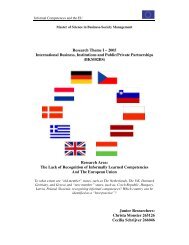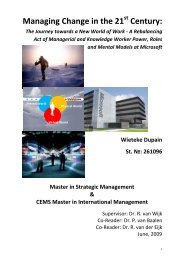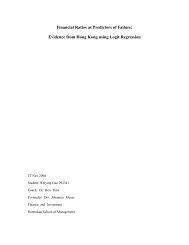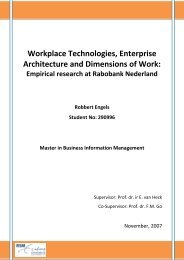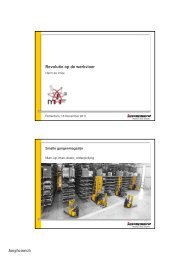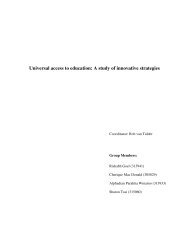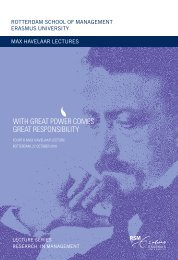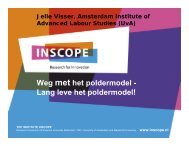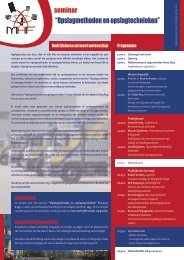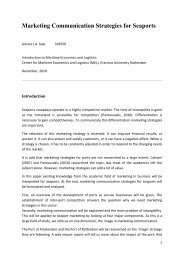here - ERIM - Erasmus Universiteit Rotterdam
here - ERIM - Erasmus Universiteit Rotterdam
here - ERIM - Erasmus Universiteit Rotterdam
Create successful ePaper yourself
Turn your PDF publications into a flip-book with our unique Google optimized e-Paper software.
A validation Study of House of Quality key performance indicators<br />
Segmentation by organizational structure<br />
According to De Valck (2005), the way a virtual community is organized not only influences the way<br />
individual members participate but has also influence on how they make consumer decisions.<br />
T<strong>here</strong>fore the third segmentation aspect distinguished by De Valck (2005) is based on the<br />
organizational structure of the virtual community. For segmentation on the organizational structure<br />
De Valck distinguished several dimensions. The most appropriate one for De Unie will be the issue<br />
whether and to what extent the individual members are likely to endorse the virtual community on a<br />
voluntary basis.<br />
2.3.3 Function of Virtual Communities in Marketing<br />
As mentioned before, the internet can be very valuable to its users. The internet is able to connect<br />
across diverse and dispersed locations. By doing so, the internet creates new social constructs like<br />
communities of users (Jones 1999). T<strong>here</strong>fore the interest of marketers in learning about, organizing<br />
and managing virtual communities on the internet is increasing (Bagozzi and Dholakia, 2002).<br />
Hagel and Armstrong (1997) announce that companies which are able to invest in new possibilities<br />
created by the internet will gain positive advantages by the creation of virtual communities, leading<br />
to market knowledge and information. Nowadays marketers start finding ways that can strengthen<br />
and support their brand image and overall corporate identity by the creation of strong virtual<br />
communities (Hildebrand, 1998).<br />
Kozinets (1999) mentioned that marketers should be aware that within the virtual environment,<br />
consumers are considered to be; 1) more active and discerning; 2) less accessible to one-on-one<br />
processes and 3) provide a large amount of valuable and cultural information. Taking this into<br />
account, Rowley (2004) contributes that within the virtual environment marketing communications<br />
t<strong>here</strong>fore are concerned with the following factors; creating presence, creating relationships and<br />
creating mutual benefits.<br />
De Valck (2005) summarized the benefits for consumers as well as for producers in the overview<br />
presented in Table 1.<br />
31




